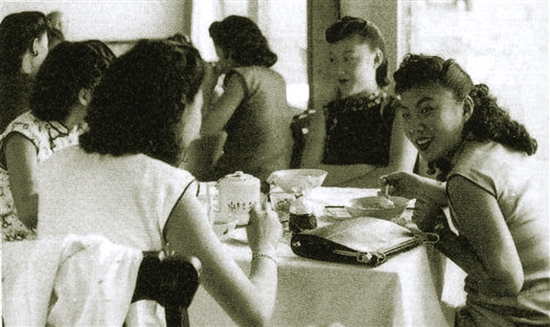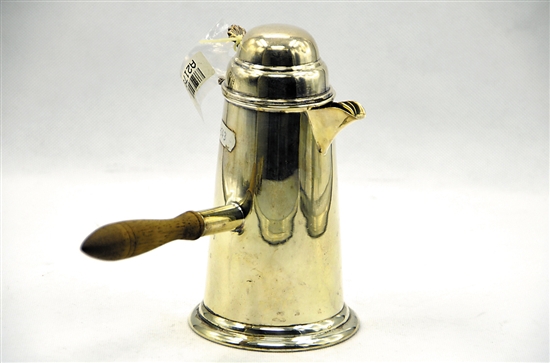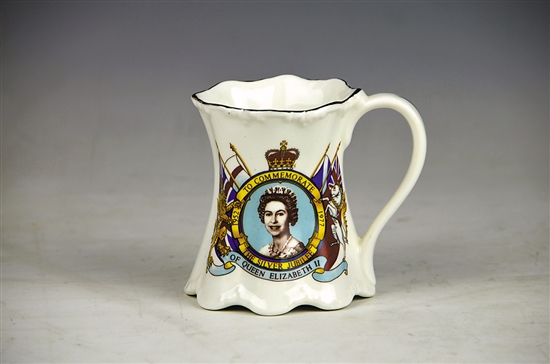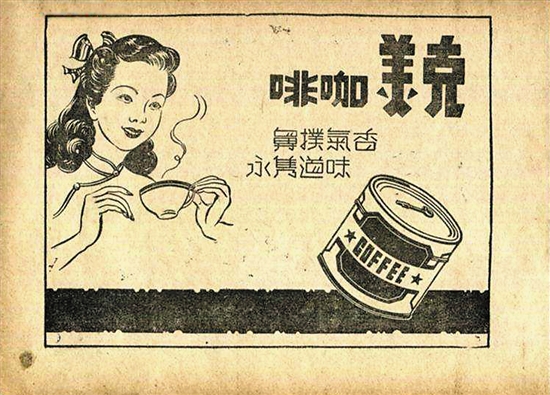The first cafe in China appeared in Guangzhou. Lu Xun doesn't really like coffee.
Professional barista communication, please pay attention to coffee workshop (Weixin Official Accounts cafe_style)

Coffee drinkers.

Silver coffee pot made in China for export in late Qing Dynasty and Republic of China

Coffee cup at the end of the Republic of China with the head of the Queen of England printed on it

Canned Coffee Advertisements in the Republic of China
Today we are going to talk about coffee, a popular drink all over the world.
There are not many drinks that are popular all over the world. Just count them on your fingers. Wine, tea, coffee, and Coca Cola are only four kinds. Among these four drinks, wine has multiple origins. Coke originated in the United States, tea originated in China, and where did coffee come from?
Legend has it that Ethiopia in Africa.
From Africa to Arabia
The legend goes like this: Long, long ago, an Ethiopian youth went to herd sheep and saw an unknown plant full of green leaves and red fruits by the roadside. Sheep to nibble green leaves, even fruit together to eat, eat unexpectedly excited, happy bleating. Seeing this, the young man picked a few red fruits and put them into his mouth. Then, he became excited. He naturally wanted to bring back such a magical fruit and invite the residents of the same clan to taste it. As a result, the whole clan went crazy with joy and became addicted from then on. He named the plant Keffa with the name of his clan's residence, and the Keffa law slowly evolved into another word Coffee in the process of spreading.
Kafa is located in southern Ethiopia, where the inhabitants are said to be among the first to taste coffee in the world.
Legends are certainly not as reliable as authentic history, but there was no writing in all of Africa at that time. The earliest written records of coffee actually came from Arabs.
In the 10th century AD, the Arab doctor Rajis wrote coffee into the prescription: coffee nuts dried, crushed, and boiled into a medicinal soup to relieve pain. The coffee berries used in the prescription may have come from Ethiopia or from other parts of Africa.
In the 13th century AD, a man named Omar in Yemen, the southernmost part of the Arabian Peninsula, was exiled to Miosaba, South Sudan, Africa, because he made a mistake and saw endless wild coffee trees. At the end of his exile, he plucked many coffee berries and brought them back to Yemen, where he stripped the seeds and tried to plant them, with great success. According to the literature, Yemen should be the first place to grow coffee in the Arabian Peninsula, Omar should be the first person to grow coffee in the Arab world, and may even be the first person to grow coffee in the world. Although Africa has long produced coffee, it is mainly wild and lacks artificial cultivation.
Over the next 100 or 200 years, Omar's coffee trees proliferated throughout Yemen, and coffee drinkers grew in number. In the mid-15th century, the Yemeni dynasty issued a decree legalizing the cultivation and consumption of coffee by its citizens.
In the late 15th century, coffee spread northward from Yemen, first to Arabia and then to the Islamic regions of Europe. At this time, the Ottoman Turkish Empire in the Islamic world was gaining momentum, destroying Byzantium and conquering Egypt. Coffee also followed the footsteps of Turkish expansion and came to Egypt and Asia Minor.
From ancient tea powder to modern coffee
Arab culture contained deep-rooted commercial genes. The Ottoman Empire maintained more and more frequent trade exchanges with the outside world while expanding its military. In the early Ming Dynasty, Arab merchants arrived in China along the ancient Silk Road, bringing lions and rhinos in exchange for silk and porcelain. At the same time, the Armada sent by Emperor Chengzu of the Ming Dynasty under Zheng He was also advancing westward by sea and arrived at the heart of the Arab world, Tianfang Kingdom, which is now Saudi Arabia. The porcelain, iron pot and teapot on board were warmly welcomed here.
The members of Zheng He's fleet did not drink coffee, but they drank tea, and the way they drank tea, and the tea sets they used, impressed the Arabs so much that they revolutionized the way Arabs drank coffee.
Before the 15th century, Arabs drank coffee in this way: pluck the coffee fruit, keep the pulp, throw away the seeds inside the pulp, dry it, mash it, boil it, and drink soup.
After the 15th century, drinking became like this: picking coffee berries, throwing away the pulp, keeping the seeds, baking the seeds, grinding them, cooking them, and drinking soup.
The seeds of coffee berries are naturally coffee beans, and the Arabs of the late 15th century drank coffee exactly the same way as they do today, laying the foundation for modern coffee culture.
Why is coffee culture changing? Because of the influence of Chinese tea culture. Zhu Quan, Zhu Yuanzhang's son, wrote in Tea Spectrum that the upper class in the early Ming Dynasty still drank tea like the people of Song Dynasty and Yuan Dynasty, while the way of drinking tea in Song and Yuan Dynasties was completely different from that of today. At that time, a tea drinking standard called "diancha" was popular: tea leaves were steamed, rinsed, kneaded, pressed into cakes, baked, ground into powder when drinking, mixed in a bowl with boiling water, or directly sprinkled in boiling water pot and boiled into tea soup.
We can imagine that when Arab merchants entered China, or when Chinese fleets passed through the Arabian Peninsula, Chinese tea and Chinese tea drinking methods must have shocked Arabs and made them suddenly think: Ah, so tea is drunk like this. Can coffee be drunk like this? How about trying? Wow, it's better than before! And so began the transformation.
Until today, coffee cups in the Arab world, and even coffee cups all over the world, are basically similar in shape to traditional Chinese tea cups, with a cup holder at the bottom and a handle on the side, completely unlike the deep cups and goblets inherent in the Western world. This also shows from the side that the coffee culture founded in the 15th century was formed under the influence of ancient Chinese tea culture.
Three coffee runs away.
Around 1530, Damascus, the oldest city in Arabia, opened the world's first café. Then, in 1544, a cafe appeared in Istanbul, the capital of Turkey. That same year, the Sultan of Turkey began taxing coffee and classifying it as a bulk export commodity. In order to monopolize the coffee trade, the Turkish government strictly prohibits the export of coffee seedlings, coffee branches, coffee beans that may germinate, and only exports cooked coffee beans.
In 1615, the Venetians, the most commercially minded in Europe, imported ripe coffee beans from Turkey and opened Europe's first coffee shop in Venice. Then, in 1650, Oxford, England opened Europe's second café. In 1652, coffee shops were opened in London. In 1643, a café was opened in Paris, France. In 1650, a cafe was opened in Marseille, France. In 1684, a cafe opened in Vienna, Austria.
The Europeans opened coffee shops, and the profits were very low, because the Arabs strangled the coffee growers. Any coffee shop that wanted to sell coffee had to import coffee beans from Arabs. In order to break this situation, the Europeans used their brains.
In 1616, a "heroic" Dutchman evaded inspection at Yemeni customs and stole a coffee plant. He took a sailboat and returned home along the new route opened by his predecessors, passing through the Arabian Sea, the Indian Ocean, the Atlantic Ocean and the English Channel, and finally successfully brought the coffee seedlings back to Holland. The young plant was carefully nurtured by him and planted in a sunny glass jar, otherwise it would wither on the road. This little coffee plant thrived and produced countless descendants. By the time Dutch colonists occupied Sri Lanka in 1656, coffee had spread not only to the high-end botanical gardens of Holland, but also to Southeast Asia. Soon, large coffee plantations were opened on Ceylon Island, where the temperature was more suitable.
In 1714, King Louis XIV of France received a gift from the Netherlands: a coffee plant. Louis XIV found it precious and transplanted it to the greenhouse of the Jardin des Botaniques in Paris. In 1720, the Gardin Botanical Garden coffee seedlings multiplied from one to 700, after the Netherlands, France became the second country in Europe to have coffee trees.
In 1723, a French officer, De Crew, stole a coffee plant from the Jardin des Botanies, planted it in a glass case and carried it to Martinique, a French colony in the American Caribbean. In 1726, the coffee tree began to bear fruit. In 1777 Martinique had 1800 coffee trees.
In 1727, Pachta, a Portugal colonist stationed in Brazil, wanted to grow coffee in Brazil and applied to Holland and France for a bag of coffee beans that could be grown. Neither country would give them. Pachta found another way. With the help of the governor's wife of Guyane française, he hid the raw coffee beans from France in a large bouquet of flowers and shipped them back to Brazil. From then on, Brazil began to grow coffee. The doge's wife was Pachta's mistress, and their relationship was not serious. However, what they did was famous in history. Brazil is now the world's first coffee producer. It should be attributed to the efforts of Pachta and his mistress.
The Indian Peninsula has a warm climate and spring all year round, which is suitable for growing coffee like Central and South America. In 1630, Baba Budan of southern India secretly pasted seven coffee beans on his belly during his pilgrimage to the Middle East, escaped supervision and brought them back to his hometown. Since then, the descendants of coffee have flourished in India and continue to this day.
In short, coffee originated in Africa, was promoted by Arabs, and then spread from Arabia to Europe, America and Asia. The process of transmission is full of thrills and can be made into a mystery documentary.
Denmark opens first coffee shop in China
All of this without mentioning when coffee came to China.
Before the Opium War, the Qing Dynasty closed its doors to the outside world, leaving only Guangzhou as a trading port. Europeans frequently arrived in Guangzhou and could not find cafes, so they had to open their own shops. Around 1836, Danes opened a cafe near today's Thirteen Line Clothing Wholesale Market, which was the first cafe in Guangzhou and also the first cafe in China. This cafe is open to foreigners, but Chinese consumption is not prohibited. The problem is that the pedantic Qing government at that time strictly prohibited Chinese from wearing foreign clothes, eating foreign food and accepting foreign missionary work. If a person dared to speak foreign language without the permission of the government, he might be killed and his home confiscated. Therefore, Chinese should not dare to enter the door of this cafe.
Zha Jiaqing years compiled "Guangdong Tongzhi," Volume 95 "Products·Grain" records: "There is black wine, Fangui drink it after dinner, cloud this wine can digest also." The "black wine" here is coffee, and most Chinese at that time did not recognize coffee and thought it was black wine.
After the Opium War, Shanghai established a concession, and a Jew opened a cafe in the British Concession. At this time, the Qing court ban was lifted, and the number of Chinese compradors who helped foreign businessmen manage their business increased sharply. They learned the lifestyle of foreign bosses and became the first people to drink coffee in China.
In 1866, the American missionary Mrs. Corpi compiled a pamphlet on Western diet, translated into Chinese as The Book of Making Foreign Rice (officially published in 1909), with a paragraph devoted to coffee: "Bake the fat with strong fire, shovel frequently, and don't burn it." Bake well, add a little cream while hot, put in a covered bottle, cover well, and roll it when needed." The so-called "fat" means coffee. This is the transliteration of coffee at that time. It looks very strange.
The book was written by missionaries to train Chinese western cooks, so that Chinese servants hired by foreign merchants and missionaries could learn to bake bread, make western food, cook steak and brew coffee as soon as possible, so as to serve their employers better. It is conceivable that some Chinese cooks and nannies employed by foreigners had learned to make coffee before this book was published. Hurd, the first chief of the Qing Customs, recalled that in 1858 he worked as an interpreter for the Anglo-French Allied Committee in Guangzhou, hired an illiterate Chinese nanny and taught her how to make coffee and prepare afternoon tea.
In 1914, the New World Restaurant near Wangfujing in Beijing opened, and the cafe was on the top floor of the restaurant.
In 1915, Dong 'an Market outside Dong' an Gate was transformed, adding a cafe in addition to picture stalls, billiards clubs and dress shops.
Wu Lu Xun doesn't like coffee
Entering the Republic of China, the west wind further eastward, studying abroad became fashionable, and more and more Chinese people came into contact with coffee.
In May 1927, Zheng Zhenduo took a French ship from Shanghai to study in France. On the way, he drank coffee every day and almost vomited.
Those who became famous during the Republic of China, such as Xu Zhimo, Yu Dafu, Guo Moruo, Lin Huiyin, Bing Xin, Hu Shi, Ba Jin, Lao She... including Jin Yong's uncle Jiang Baili, Huang Jianxiang's grandfather Huang Daxian, all studied. They either studied in Europe and America or in Japan, and coffee culture prevailed in Europe and America or Japan at that time. In February 1948, a famous female writer of our country was recuperating in Japan and wrote to her friends at home to complain that the Japanese nanny she hired could only cook rice and not make coffee, and life was quite inconvenient. What does this example show? It shows that drinking coffee has become a part of daily life among foreign students.
Lu Xun also studied, but he did not develop the habit of drinking coffee. According to Xu Qinwen, a student he taught, Lu Xun usually liked tea, Shaoxing yellow wine and rarely coffee.
Xu Guangping was younger than Lu Xun and was born in a rich family in Guangzhou. He was influenced by coffee and often drank it. In 1927, Lu Xun and Xu Guangping left Guangzhou for Shanghai and stayed in a hotel where three meals a day were provided. One day after dinner, the hotel waiter brought coffee. Lu Xun said to Xu Guangping, who was stirring the coffee: "Miss Xu, your stomach is not good. Coffee is better not to eat. Eat some fruit!"
I do not know medicine, do not know whether coffee really hurt the stomach, but see Lu Xun this advice, always feel very kind, because I do not like coffee.
Important Notice :
前街咖啡 FrontStreet Coffee has moved to new addredd:
FrontStreet Coffee Address: 315,Donghua East Road,GuangZhou
Tel:020 38364473
- Prev

Drink coffee diuretic, easy to dehydrate? American Medical College: it doesn't hurt to drink this way.
Professional baristas Please follow the Coffee Workshop (official Wechat account cafe_style) have you ever heard of the saying that it takes 1.5 cups of water to prevent dehydration? There are many health messages often mention that caffeine in coffee and tea has a diuretic function, not only can not be used as a rehydration drink but may also lead to dehydration. To read the relevant literature, or even
- Next

400 yuan a cup of coffee, is it expensive? It's a matter of opinion.
Exchange of professional baristas Please follow one of the hottest coffee topics in the coffee workshop (Wechat official account cafe_style) recently. I think it is the record-breaking Panamanian geisha beans sold at sky-high prices! (note: it's Gesha, not Japanese Geisha, but if you ask for ease, you don't need to pursue it. ) this sun-dried bean is a famous Hacienda la Esmeralda estate.
Related
- A complete list of coffee bean names and their meanings! What is Yejia Shefi coffee? Where is Mantelin coffee?
- What grade does Arida Manor Kaduai coffee beans belong to? What treatment is Arida ASD slow anaerobic sun exposure?
- The milk tea cup becomes smaller?! Overlord Tea Girl launches a new "Return to Yunnan" series
- Accused of selling counterfeit and high-priced coffee beans! Well-known boutique coffee brand "Oukelao" bowed and apologized!
- How to make espresso dumplings? Can I eat coffee and glutinous rice balls together?
- Save the unformed and stagnant powder cakes in one second! What is the problem with stagnant water in the powder bowl of the espresso machine?
- What does hand-brewed coffee stop mean? Why is it not recommended to make coffee by hand?
- Is it normal to smell like coffee? Why does coffee smell like alcohol? What's wrong with the strong smell of cold extract ice dripping ice brewed coffee?
- How to solve the problem that hand-brewed coffee extraction takes too long? Why is the water flowing so slowly when making coffee?
- The main points of making Australian white coffee, the proportion details, how does Australian white properly foam and blend the flowers?

